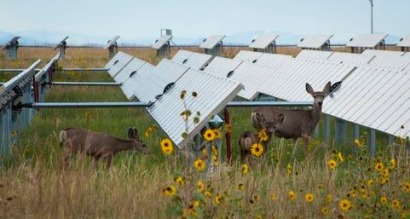
But as celebrated the market’s success, they were also mindful of the new challenges that accompany such growth.
"In the future we need to be smarter about designing both the transmission lines as well as the photovoltaic systems", said Karl-Heinz Remmers, CEO of organizer Solarpraxis in his opening speech.
He said that from an economic standpoint, owing to the steep falls in price of the modules, it will be important in the future to take one´s chance in being more efficient both in matching system configurations and in the systems themselves.
For a long time grid parity has been the long-term goal of the industry, but now it makes more sense to use the generated power directly rather than feeding it into the grid.
"Bye-bye to grid parity", is the new motto, Remmers suggested.
Hans-Josef Fell, MP for the Green Party, noted that the industry is running far ahead of the much less ambitious goals of the German government – to supply 35 percen of power from renewable energy sources by 2020.
He believes that a 100 percent renewables-based supply can be achieved as soon as 2030. Thereby, according to a study by the International Energy Agency, energy will become even cheaper than from fossil-based sources.
"There is a potential of 200 GWp for PV in Germany" said Prof. Dr. Volker Quaschning of the University of Applied Sciences in Berlin, basing his comment on the assumption that the feed-in tariff for solar power will only be required over the next three to four years.
He also pointed to the potential of about 100 GW for home installations in 2020.
On the second day, Ash Sharma of IMS Research noted that 2011 -- largely seen by the industry as a bad year – actually, with an increase in installations of 34 percent worldwide.
For 2012 he predicted stagnation in the number of installations globally: the declining numbers in Europe would be offset by an increase in construction in the US and Asia. Moreover, large quarterly variations can be expected, he said.
In light of these facts, the big challenge for manufacturers and suppliers will be to adapt to the further differentiation of markets; it is expected that 21 countries will each install more than 100 MW in 2012, he added.
A follow-up conference, "Inverter and PV System Technology Forum - USA 2012", will be held on 27 and 28 February in San Francisco, Calif. Organizers said it will highlight the US perspective on the growing importance of the electrical components and their contribution to a trouble-free and profitable operation of PV systems over the long term.
For additional information:

